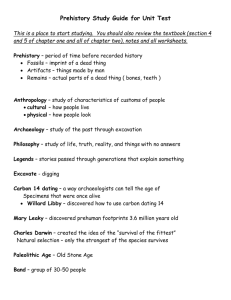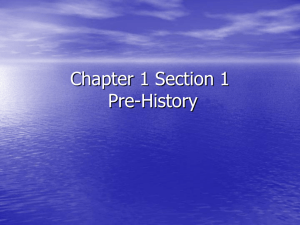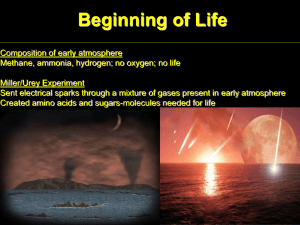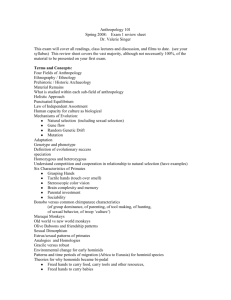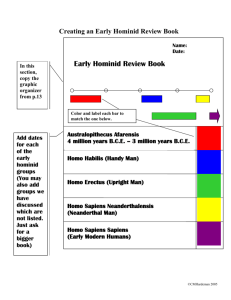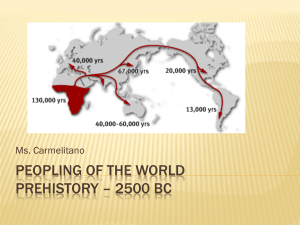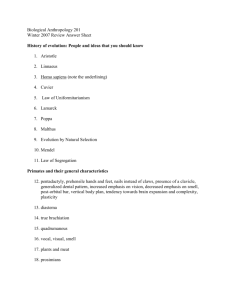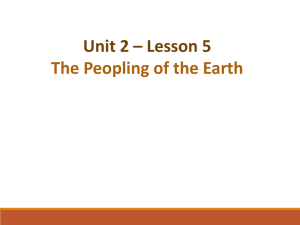Chapter 12 Reading/ Guided Notes Name
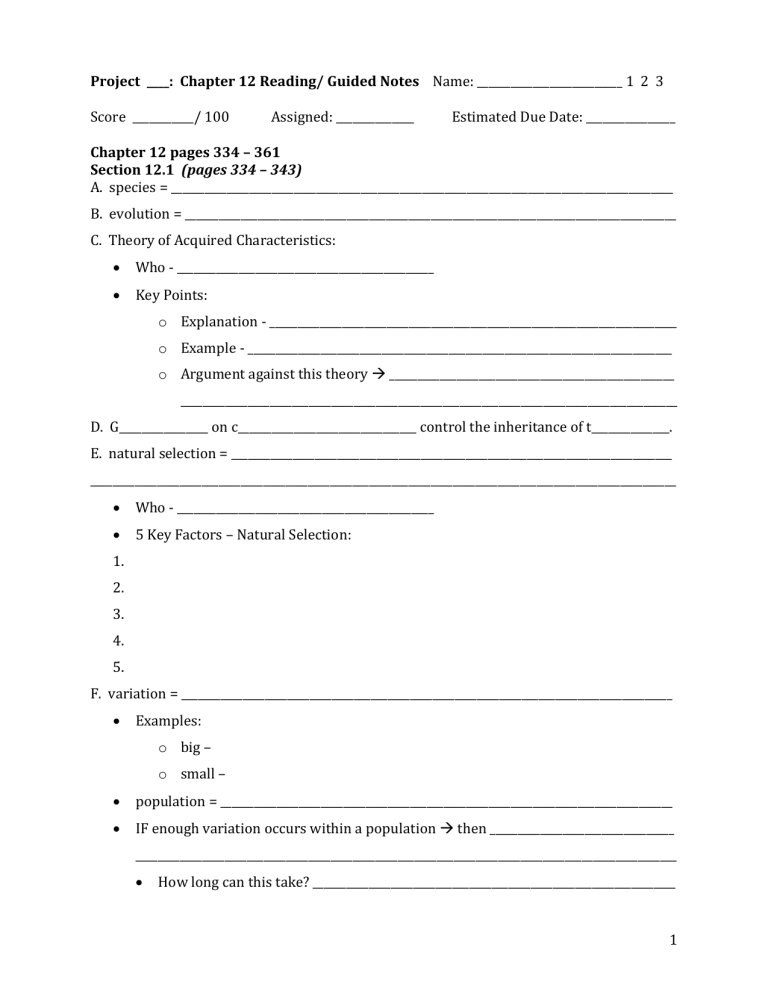
Project ____: Chapter 12 Reading/ Guided Notes Name: __________________________ 1 2 3
Score ___________/ 100 Assigned: ______________
Chapter 12 pages 334 – 361
Section 12.1 (pages 334 – 343)
Estimated Due Date: ________________
A. species = __________________________________________________________________________________________
B. evolution = ________________________________________________________________________________________
C. Theory of Acquired Characteristics:
Who - ______________________________________________
Key Points: o Explanation - _________________________________________________________________________ o Example - ____________________________________________________________________________ o Argument against this theory ___________________________________________________
_________________________________________________________________________________________
D. G________________ on c________________________________ control the inheritance of t______________.
E. natural selection = _______________________________________________________________________________
_________________________________________________________________________________________________________
Who - ______________________________________________
5 Key Factors – Natural Selection:
1.
2.
3.
4.
5.
F. variation = ________________________________________________________________________________________
Examples: o big – o small –
population = _________________________________________________________________________________
IF enough variation occurs within a population then _________________________________
_________________________________________________________________________________________________
How long can this take? _________________________________________________________________
1
G. adaptation = _______________________________________________________________________________________
Examples: o o
Sources of variations: o o o
H. How fast does evolution occur?
Gradualism Punctuated Equilibrium
Explanation: Explanation:
Example:
Figure 12-6 Drawing
Example:
Figure 12-6 Drawing
Section 12-1 Assessment Questions (page 341)
1.
2.
3.
4.
Section 12.2 (pages 344 – 351)
A. paleontology = ____________________________________________________________________________________
B. 5 types of fossils
1.
2.
3.
4.
5.
2
C. S_________________________________ rocks contain the most fossils.
Examples: l____________________________, s_____________________________ & s___________________
D.
Relative Dating Radiometric Dating
Description: Description:
E. Reading : Which is more accurate, relative dating or radiometric dating? _______________
F. How does the fossil record support the theory of evolution?
G. homologous = ____________________________________________________________________________________
H. vestigial structures = ____________________________________________________________________________
Examples: (Figure 12-13)
I. embryology = ______________________________________________________________________________________
J. DNA = ______________________________________________________________________________________________
K. How does DNA support the view that primates may have a common ancestor?
Section 12-2 Assessment (page 351)
5. Use Table 12-1, the geologic time scale, to answer the following questions.
What was the longest period of the Paleozoic era? ______________________________________
Which was the shortest? ___________________________________
What period began 1.6 million years ago? _______________________________________________
3
Footprints in Geologic Time (page 352) Describe the Laetoli Footprints.
Who found them?
What are they?
Where located?
When found?
How old?
Why was the find mportant?
Section 12.3 (pages 354 – 357)
A. primates = _________________________________________________________________________________________
B. common primate characteristics:
1. ______________________________________________________________________________________________
2. ______________________________________________________________________________________________
3. ______________________________________________________________________________________________
4. ______________________________________________________________________________________________
C. prosimians = ______________________________________________________________________________________
Example: ______________________________________________________
D. hominids = ________________________________________________________________________________________
E. Hominid Descriptions:
Hominid Species Dates Description
Australopithicus
“L_________________”
Homo habilis
Homo erectus
Homo sapiens
(Neanderthalensis)
Homo sapiens
(Cro-Magnon)
Small brain
Walked u______________________
Stone t____________________
Moved out of A______________
Used fire
Cave art
4
Section 12.3 Assessment (page 357)
3. Describe 3 differences between modern Homo sapien sapiens (us!) and Cro-Magnon by observing the skulls in Figure 12-19 on page 356.
Chapter Summary (pages 358 – 359)
Section 12.1 Mechanisms of Evolution – Key points:
1.
2.
3.
4.
5.
6.
7.
Section 12. 2 Types of Evidence for Evolution – Key Points:
1.
2.
3.
4.
5.
5
